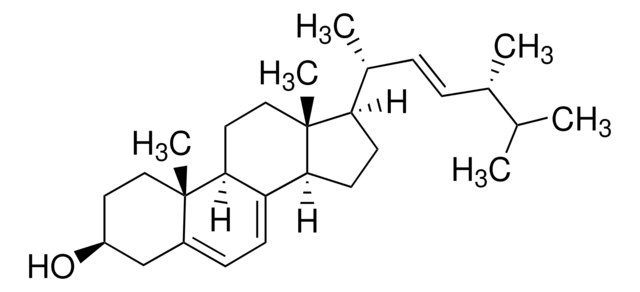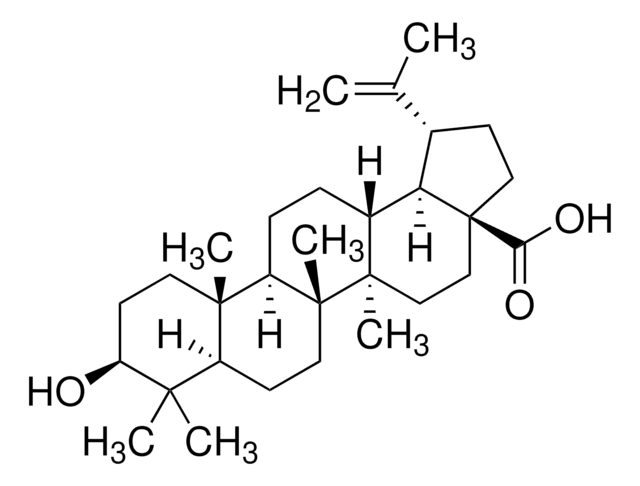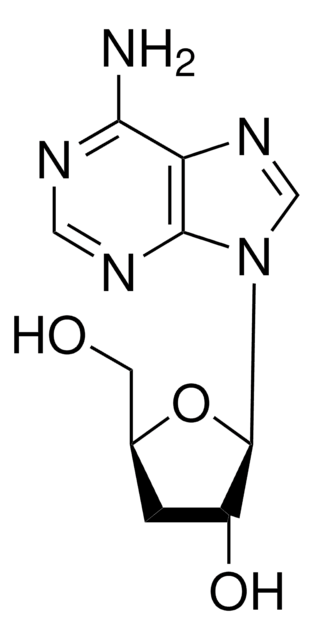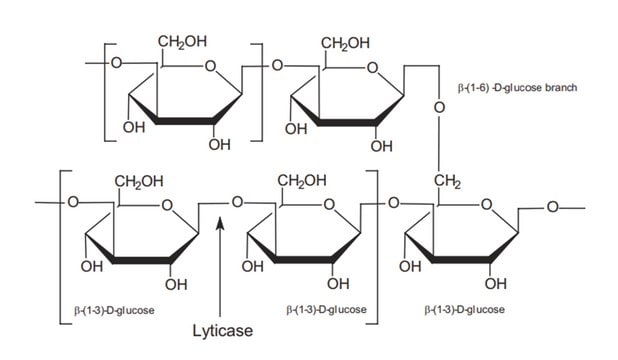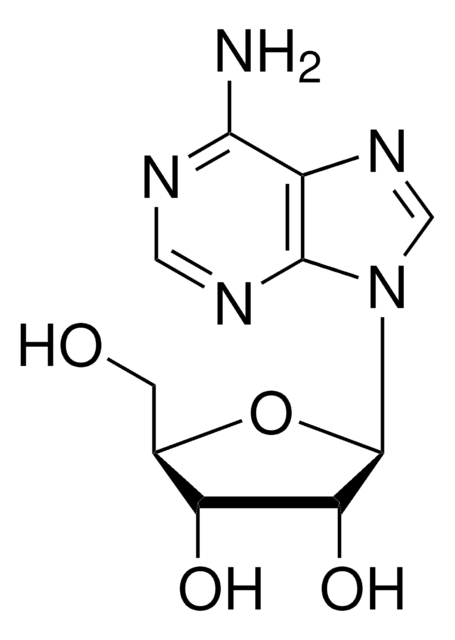SMB00445
Ganoderic acid A
≥98% (HPLC)
Synonyme(s) :
(2R,6R)-6-[(5R,7S,10S,13R,14R,15S,17R)-7,15-dihydroxy-4,4,10,13,14-pentamethyl-3,11-dioxo-2,5,6,7,12,15,16,17-octahydro-1H-cyclopenta[a]phenanthren-17-yl]-2-methyl-4-oxoheptanoic acid, (7β,15α,25R)-7,15-Dihydroxy-3,11,23-trioxo-lanost-8-en-26-oic acid
About This Item
Niveau de qualité
Pureté
≥98% (HPLC)
Forme
powder
Application(s)
metabolomics
vitamins, nutraceuticals, and natural products
Température de stockage
−20°C
Chaîne SMILES
OC(C(C)CC(C[C@@H](C)[C@H]1C[C@H](O)[C@@]([C@]1(C)CC2=O)(C)C3=C2[C@]4(C)C(C[C@@H]3O)C(C)(C)C(CC4)=O)=O)=O
InChI
1S/C30H44O7/c1-15(10-17(31)11-16(2)26(36)37)18-12-23(35)30(7)25-19(32)13-21-27(3,4)22(34)8-9-28(21,5)24(25)20(33)14-29(18,30)6/h15-16,18-19,21,23,32,35H,8-14H2,1-7H3,(H,36,37)/t15-,16?,18-,19+,21?,23+,28+,29-,30+/m1/s1
Clé InChI
DYOKDAQBNHPJFD-ZQEHRSJRSA-N
Vous recherchez des produits similaires ? Visite Guide de comparaison des produits
Description générale
Application
- to study its protective effects on hypoxia-induced rat cardiomyocytes (H9c2) cell injury
- as a reference standard to study its inhibitory and antiviral effects against groundnut bud necrosis virus (GBNV) infection in cowpea plants
- as a standard in Fourier transformed-infrared (FT-IR) spectroscopy for the analysis of secondary metabolites from Ganoderma lucidum
Actions biochimiques/physiologiques
Code de la classe de stockage
11 - Combustible Solids
Classe de danger pour l'eau (WGK)
WGK 3
Point d'éclair (°F)
Not applicable
Point d'éclair (°C)
Not applicable
Certificats d'analyse (COA)
Recherchez un Certificats d'analyse (COA) en saisissant le numéro de lot du produit. Les numéros de lot figurent sur l'étiquette du produit après les mots "Lot" ou "Batch".
Déjà en possession de ce produit ?
Retrouvez la documentation relative aux produits que vous avez récemment achetés dans la Bibliothèque de documents.
Les clients ont également consulté
Notre équipe de scientifiques dispose d'une expérience dans tous les secteurs de la recherche, notamment en sciences de la vie, science des matériaux, synthèse chimique, chromatographie, analyse et dans de nombreux autres domaines..
Contacter notre Service technique
